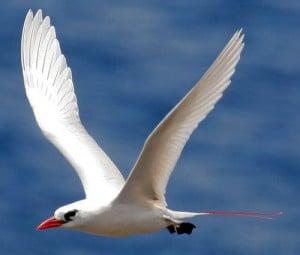Pacific Rim Conservation conducts and manages several predator control projects in Hawaii, including successful predator eradications on offshore islets and within fenced areas. On many islands throughout the Pacific region, alien terrestrial mammals (rodents, mongooses, mustelids, cats, dogs, and ungulates) pose a serious threat to native biota that did not evolve with mammalian predators and lack natural defenses against these animals. We work with State and Federal agencies and other pest control organizations to ensure that animal welfare guidelines are followed and that the most current, effective, and humane techniques are employed. Methods include live trapping, snap trapping, and poison bait stations. Our staff are certified restricted-use pesticide applicators.


Nihoku predator-proof fence multi-species eradication.
We designed and implemented a successful three-species (feral cat, black rat, and house mouse) predator removal program inside the predator-proof fence in the Nihoku area at Kilauea Point National Wildlife Refuge, using a combination of secure bait boxes and traps. We also developed and implemented pre-eradication and post-eradication monitoring protocols for pest species and native species to monitor the success of the removal program and assess its efficacy. For more information, including a list of partners, go to www.nihoku.org.
Kaena Point predator-proof fence multi-species eradication.
With funding from the David and Lucille Packard Foundation and in partnership with the Hawaii Department of Land and Natural Resources, we designed and implemented a successful five-species predator removal program inside the predator-proof fence at Kaena Point Natural Area Reserve, using a combination of secure bait boxes and traps. Predation in the reserve previously resulted in up to 15% of seabird chicks every year and prevented several endangered plant species from reproducing. Post-eradication monitoring revealed that Wedge-tailed Shearwater nesting success increased from 28% to 54%, and that the number of shearwater chicks fledging each year increased by 384%. Read more: Report #83, Report #86, and Report #89
Rat eradication from Mokuauia Islet
In collaboration with the Hawaii Department of Land and Natural Resources, we successfully removed black rats from Mokuauia Island using a combination of bait boxes and snap traps. Mokuauia (also called Goat Island) is a 13-acre State Seabird Sanctuary off the northeastern coast of Oahu in Laie Bay and is home to 16 native plant species, an estimated 6,500 nesting Wedge-tailed Shearwaters, and several migratory shorebirds, including the rare Bristle-thighed Curlew. The outcomes of this project can be downloaded here.
Predator control to protect the Oahu Elepaio

For more than 20 years, we have controlled black rats to reduce nest predation and improve the survival of the Oahu Elepaio, an endangered forest bird endemic to the island of Oahu, in collaboration with the Hawaii Division of Forestry and Wildlife, the U.S. Army, and the Nature Conservancy of Hawaii. Nest predation by alien rats is the most serious threat to this bird, and rat control has become the cornerstone of the recovery strategy. When rats are controlled, twice as many Elepaio pairs successfully raise a chick and fewer females are eaten. For more information on this project and on the Oahu Elepaio, visit www.elepaio.org. For published results of this work, see Report 82 Report 66 Report #22
Predator control to protect Red-tailed Tropicbirds

For 11 years, we have controlled alien mongooses and rats to reduce nest predation and improve the survival of a small Red-tailed Tropicbird colony on Oahu. We have monitored the effect of predator control. Predator control has allowed this struggling colony to flourish and grow; it is now the third largest colony of this species in the main Hawaiian Islands. For published results of this work, see Report #95.
